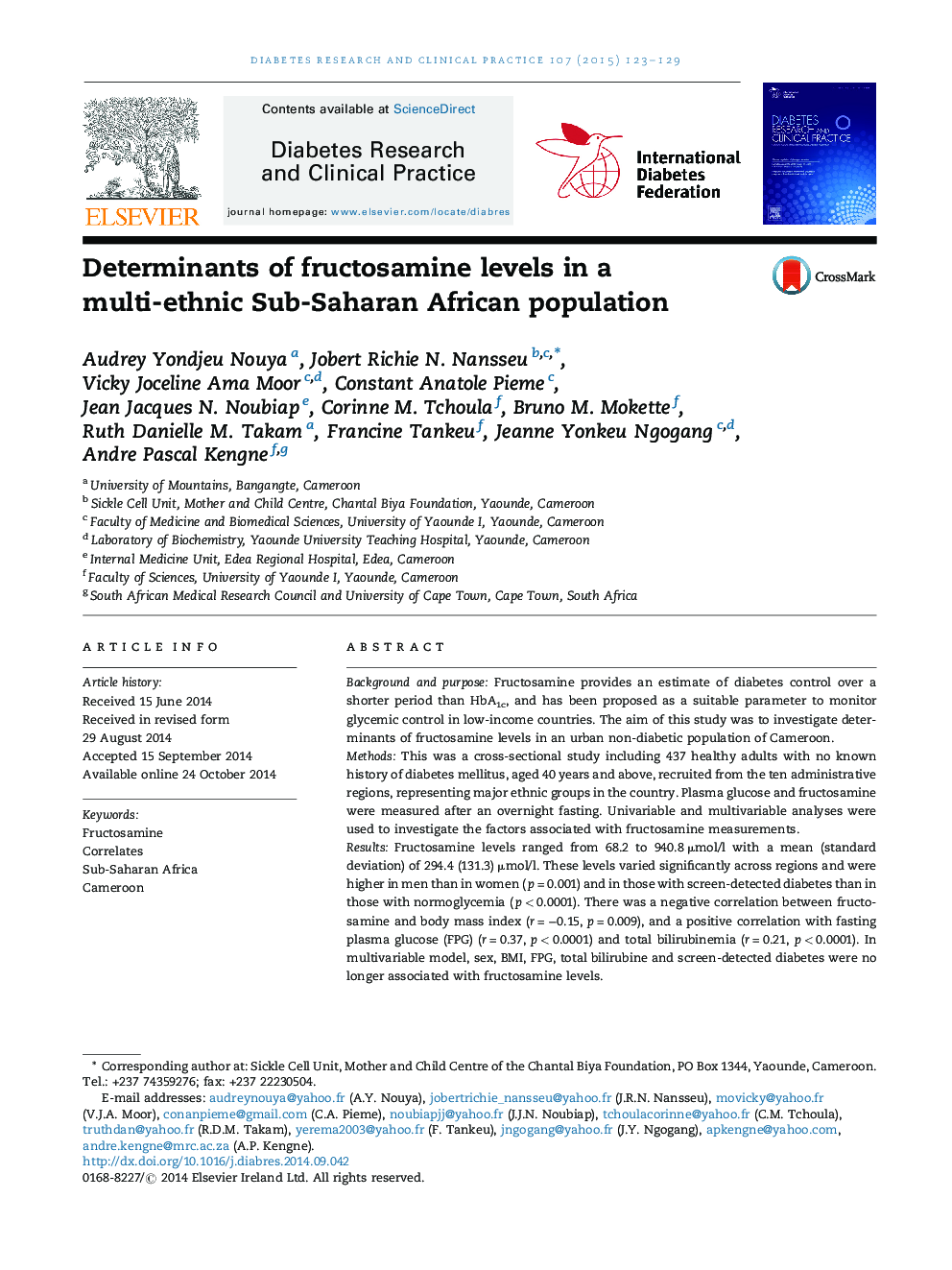| کد مقاله | کد نشریه | سال انتشار | مقاله انگلیسی | نسخه تمام متن |
|---|---|---|---|---|
| 5899185 | 1155587 | 2015 | 7 صفحه PDF | دانلود رایگان |
Background and purposeFructosamine provides an estimate of diabetes control over a shorter period than HbA1c, and has been proposed as a suitable parameter to monitor glycemic control in low-income countries. The aim of this study was to investigate determinants of fructosamine levels in an urban non-diabetic population of Cameroon.MethodsThis was a cross-sectional study including 437 healthy adults with no known history of diabetes mellitus, aged 40 years and above, recruited from the ten administrative regions, representing major ethnic groups in the country. Plasma glucose and fructosamine were measured after an overnight fasting. Univariable and multivariable analyses were used to investigate the factors associated with fructosamine measurements.ResultsFructosamine levels ranged from 68.2 to 940.8 μmol/l with a mean (standard deviation) of 294.4 (131.3) μmol/l. These levels varied significantly across regions and were higher in men than in women (p = 0.001) and in those with screen-detected diabetes than in those with normoglycemia (p < 0.0001). There was a negative correlation between fructosamine and body mass index (r = â0.15, p = 0.009), and a positive correlation with fasting plasma glucose (FPG) (r = 0.37, p < 0.0001) and total bilirubinemia (r = 0.21, p < 0.0001). In multivariable model, sex, BMI, FPG, total bilirubine and screen-detected diabetes were no longer associated with fructosamine levels.ConclusionFructosamine was not independently associated with age, sex, ethnicity, and the glycemic status. Further studies need to be carried out to better elucidate all the factors determining the measurement of fructosamine in order to accurately interpret its values in diabetic populations.
Journal: Diabetes Research and Clinical Practice - Volume 107, Issue 1, January 2015, Pages 123-129
